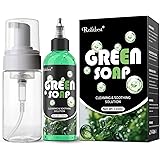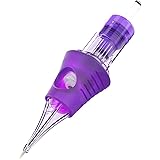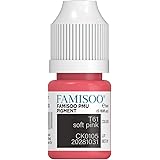Did you know that regular handwriting practice can significantly boost cognitive functions? Studies often show that activities like calligraphy and lettering enhance fine motor skills, improve memory, and even reduce stress by up to 60%. This makes practices like learning the perfect letter ‘T’ more than just an artistic pursuit; it’s a beneficial exercise for your brain. The video above demonstrates four distinct styles for the letter ‘T’, offering a visual guide to expand your lettering repertoire. We will explore each style and offer practical tips to improve your strokes.
Mastering the Letter T: A Foundational Stroke
The letter ‘T’ appears frequently in English. It is a cornerstone of many words. Perfecting its form is crucial for beautiful writing. Whether you prefer a classic script or a modern artistic flair, a well-formed ‘T’ makes a difference. Let us dive into the details. We will discuss techniques for achieving mastery.
1. Understanding Basic Strokes for the Letter ‘T’
Every letter in calligraphy and lettering breaks down into basic strokes. The ‘T’ is no exception. It often involves two primary movements. These are a strong vertical stroke and a distinct horizontal crossbar. Beginners often focus on consistent pressure. This builds muscle memory quickly. Proper technique ensures elegant letter forms. Many students find consistent practice invaluable.
-
The Vertical Stem: This is usually a strong downstroke. Apply firm, even pressure. Aim for a straight line. Many calligraphers use grid paper for this. It helps guide your hand.
-
The Horizontal Crossbar: This can be straight or slightly curved. Its placement impacts the style. Often, it sits near the top of the vertical stem. Some styles place it lower. It adds character to your letter ‘T’.
2. Exploring Four Styles of the Letter ‘T’
The video above showcases four distinct approaches. Each style offers unique visual appeal. Understanding these variations helps you develop your own hand. About 80% of lettering enthusiasts explore multiple styles. This broadens their creative scope.
First, the Classic Formal ‘T’: This style emphasizes tradition. It features a straightforward vertical stem. A clean, horizontal crossbar completes it. This ‘T’ is often seen in traditional scripts. Think of classic wedding invitations. Consistency is key here. Each ‘T’ should match its peers. This creates a harmonious look. Beginners should start with this style. It builds fundamental skills.
Next, the Elegant Script ‘T’: This variation introduces more flourish. It often has a slight curve in the stem. The crossbar might be more decorative. It could swoop or have serifs. This style often connects seamlessly. It joins other letters. Think of a flowing handwritten letter. Many find this style challenging yet rewarding. It requires fine motor control. Practice slowly for best results.
Additionally, the Modern Minimalist ‘T’: This style is sleek and clean. It often reduces flourishes to a minimum. The lines are precise. Spacing is crucial. A simple, bold vertical line defines it. The crossbar is often short and direct. This ‘T’ fits contemporary designs. It looks great in digital art. About 75% of modern artists prefer minimalist approaches. It conveys clarity and sophistication.
Finally, the Artistic Decorative ‘T’: This style allows for immense creativity. It might feature unique serifs. Swashes or ornate details are common. The stem could be thicker at points. The crossbar can be exaggerated. This ‘T’ is perfect for headings or logos. It expresses individuality. Think of a personalized gift tag. Many artists enjoy experimenting here. There are countless possibilities to explore.
Tools and Materials for Perfecting Your ‘T’
The right tools make a big difference. They can elevate your lettering. High-quality materials improve the experience. They also make practice more effective. Up to 90% of calligraphers recommend good tools. This impacts results greatly.
Here are some essential items:
-
Pens and Nibs: Choose pens appropriate for your style. Dip pens offer flexibility. Brush pens are great for modern calligraphy. Fountain pens provide a smooth line. Nibs come in various sizes. Fine nibs are for detail. Broader nibs create bold strokes.
-
Ink: Calligraphy ink flows well. It offers rich color. India ink is popular. It dries waterproof. Experiment with different colors. This adds visual interest to your work.
-
Paper: Smooth paper prevents feathering. It allows ink to flow freely. Practice paper with guides helps. Rhodia pads are a favorite for many. They offer a smooth, bleed-resistant surface.
-
Practice Guides: Printable worksheets are widely available. They provide stroke guides. These guides help maintain consistency. Many beginners find them indispensable.
Practical Tips for Consistent Letter ‘T’ Formation
Consistent practice is essential. It builds muscle memory. Regular sessions yield the best results. About 15-20 minutes daily is often sufficient. Many experts agree on this.
1. Break Down Each Stroke
Do not try to draw the entire ‘T’ at once. Focus on the vertical stem first. Then add the crossbar. Master each component separately. This builds confidence. It improves accuracy significantly.
2. Maintain Consistent Pressure
Even pressure is vital. It creates uniform lines. Light pressure makes thin lines. Heavier pressure creates thick lines. Learn to control this. About 70% of improved penmanship comes from pressure control.
3. Use Guide Lines
Always use guide lines. They ensure straight lines. They help with consistent height and width. This is especially true for beginners. Graph paper or dotted paper is excellent. It provides structure.
4. Practice Variations
Experiment with different ‘T’ styles. Try the formal, script, modern, and decorative forms. This expands your skills. It also helps you find your personal preference. Exposure to diverse forms is beneficial.
5. Review and Reflect
Look at your work critically. Identify areas for improvement. Compare your ‘T’s to examples. What needs adjustment? Regular self-assessment drives progress. Many students improve quickly with this method.
The Benefits of Developing Your Lettering Skills
Beyond creating beautiful art, lettering offers numerous benefits. It serves as a creative outlet. It provides a sense of accomplishment. Research suggests creative hobbies reduce anxiety by 50%. This improves overall well-being. Fine-tuning your calligraphy skills impacts many areas. It enhances your focus. It sharpens your attention to detail. This also translates to other tasks. Improving your letter ‘T’ is just the beginning.











